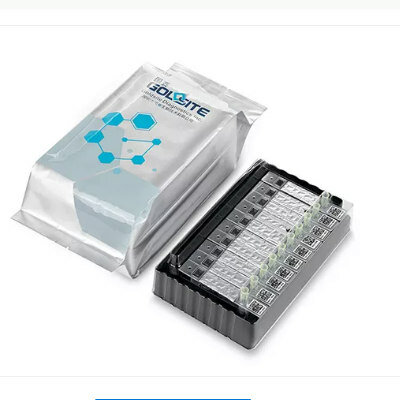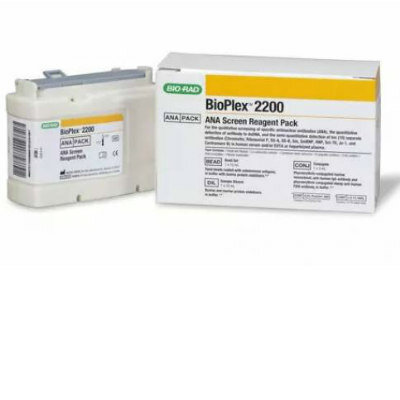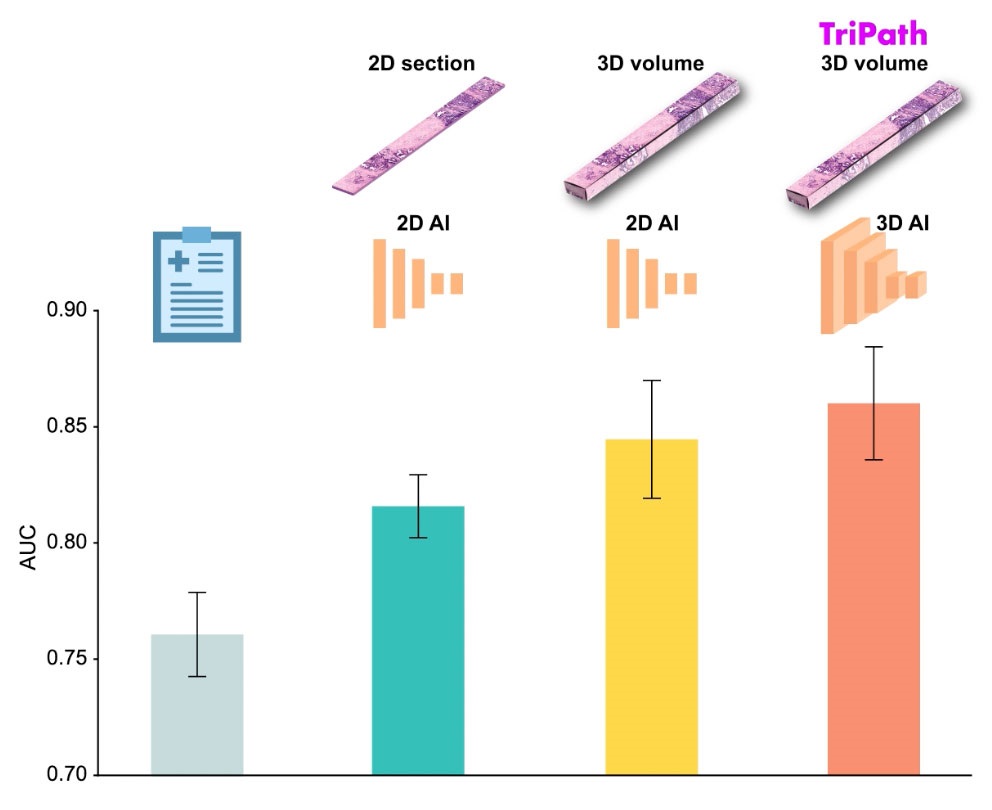Enzyme Boosts Power of Liquid Biopsies to Detect Cancers
|
By LabMedica International staff writers Posted on 29 Nov 2017 |
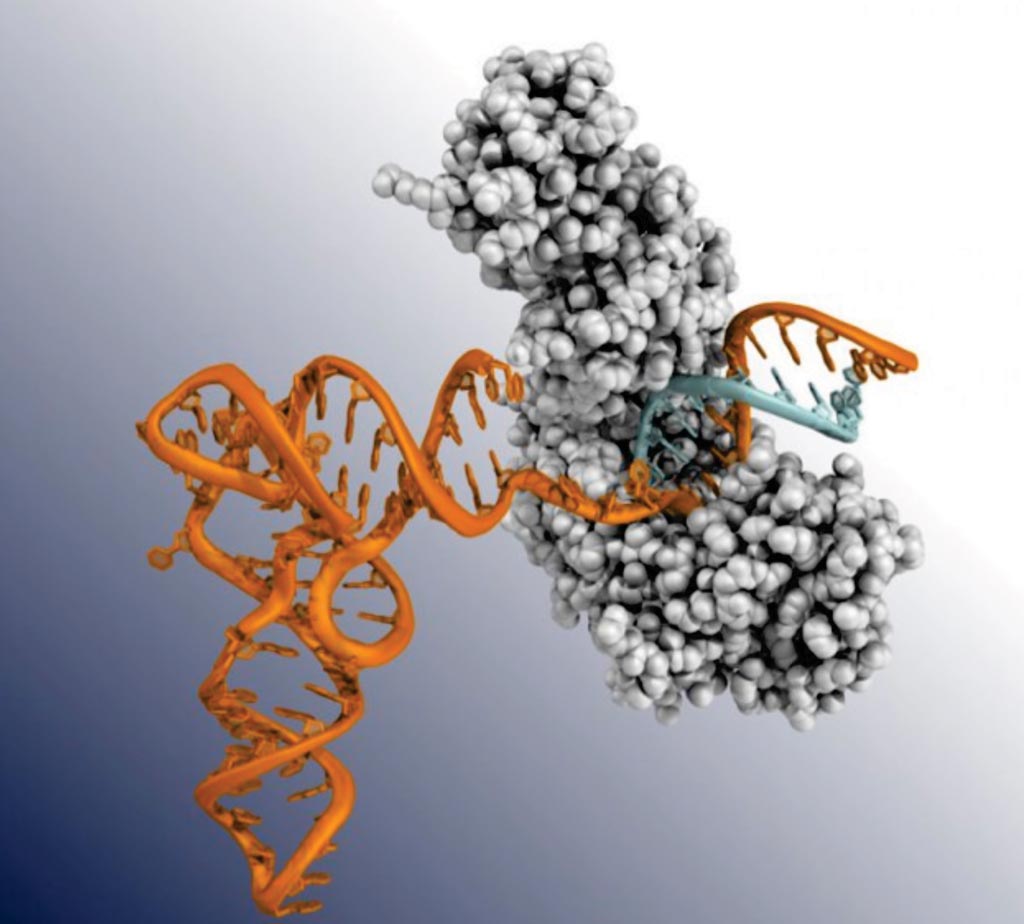
Image: An ancient bacterial enzyme (grey) crawls along a tangled strand of RNA (orange), creating a complimentary strand of DNA (blue). This enzyme, called GsI-IIC RT, and part of a group of enzymes known as TGIRTs, have novel properties that make it easier to detect RNA biomarkers from cancer and other disorders (Photo courtesy of the University of Texas at Austin).
A new tool has been developed for liquid biopsy that can detect RNA biomarkers from cancer cells in a patient's blood much more accurately and completely than other existing methods. This could soon provide doctors with a more complete picture of an individual's disease.
Many current liquid biopsies can detect DNA in blood; others can detect RNA, although they tend to miss many key RNA biomarkers and misinterpret others. An ancient enzyme detects the full range of RNAs with much higher accuracy, which is helpful for understanding both the general profile of a disease such as cancer and specific information about its activity in a particular patient.
Scientists at the University of Texas at Austin (TX, USA) uncovered for the first time the molecular structure of this RNA-detecting enzyme in action, offering clues about how it works and how it can be improved for use in medical tests. Both DNA and RNA bear genetic information useful for understanding a disease state such as cancer. Bacterial group II intron reverse transcriptases (RTs) function in both intron mobility and RNA splicing and are evolutionary predecessors of retrotransposon, telomerase, and retroviral RTs as well as the spliceosomal protein Prp8 in eukaryotes. The team determined a crystal structure of a full-length thermostable group II intron RT in complex with an RNA template-DNA primer duplex and incoming deoxynucleotide triphosphate (dNTP).
Thermostable Group II Intron Reverse Transcriptases (TGIRTs) are ancient enzymes that date to a time when genetic information was stored mainly in RNA, but life was transitioning to DNA. Another major finding of the study was that TGIRT enzymes are remarkably similar to enzymes from RNA viruses, which copy RNA. This highlights the potential evolutionary role of TGIRTs and other closely related enzymes in the evolution of present-day organisms, which use DNA for genetic material.
Alan M. Lambowitz, PhD. a professor of Cellular and Molecular Biology and lead investigator, said, “DNA biomarkers are static. They provide information about mutations that cause a disease, but they don't provide information about the effect of these mutations on cellular processes, which can differ in different individuals. Monitoring cellular RNAs provides a snapshot of exactly what is happening in diseased tissue, such as a tumor, at a particular time. The method can be used to monitor day-to-day progression of the disease and response to treatment and to predict how different individuals with the same cancer will respond to different treatments.” The study was published on November 16, 2017, in the journal Molecular Cell.
Related Links:
University of Texas at Austin
Many current liquid biopsies can detect DNA in blood; others can detect RNA, although they tend to miss many key RNA biomarkers and misinterpret others. An ancient enzyme detects the full range of RNAs with much higher accuracy, which is helpful for understanding both the general profile of a disease such as cancer and specific information about its activity in a particular patient.
Scientists at the University of Texas at Austin (TX, USA) uncovered for the first time the molecular structure of this RNA-detecting enzyme in action, offering clues about how it works and how it can be improved for use in medical tests. Both DNA and RNA bear genetic information useful for understanding a disease state such as cancer. Bacterial group II intron reverse transcriptases (RTs) function in both intron mobility and RNA splicing and are evolutionary predecessors of retrotransposon, telomerase, and retroviral RTs as well as the spliceosomal protein Prp8 in eukaryotes. The team determined a crystal structure of a full-length thermostable group II intron RT in complex with an RNA template-DNA primer duplex and incoming deoxynucleotide triphosphate (dNTP).
Thermostable Group II Intron Reverse Transcriptases (TGIRTs) are ancient enzymes that date to a time when genetic information was stored mainly in RNA, but life was transitioning to DNA. Another major finding of the study was that TGIRT enzymes are remarkably similar to enzymes from RNA viruses, which copy RNA. This highlights the potential evolutionary role of TGIRTs and other closely related enzymes in the evolution of present-day organisms, which use DNA for genetic material.
Alan M. Lambowitz, PhD. a professor of Cellular and Molecular Biology and lead investigator, said, “DNA biomarkers are static. They provide information about mutations that cause a disease, but they don't provide information about the effect of these mutations on cellular processes, which can differ in different individuals. Monitoring cellular RNAs provides a snapshot of exactly what is happening in diseased tissue, such as a tumor, at a particular time. The method can be used to monitor day-to-day progression of the disease and response to treatment and to predict how different individuals with the same cancer will respond to different treatments.” The study was published on November 16, 2017, in the journal Molecular Cell.
Related Links:
University of Texas at Austin
Latest Molecular Diagnostics News
- Blood Proteins Could Warn of Cancer Seven Years before Diagnosis
- New DNA Origami Technique to Advance Disease Diagnosis
- Ultrasound-Aided Blood Testing Detects Cancer Biomarkers from Cells
- New Respiratory Syndromic Testing Panel Provides Fast and Accurate Results
- New Synthetic Biomarker Technology Differentiates Between Prior Zika and Dengue Infections
- Novel Biomarkers to Improve Diagnosis of Renal Cell Carcinoma Subtypes
- RNA-Powered Molecular Test to Help Combat Early-Age Onset Colorectal Cancer
- Advanced Blood Test to Spot Alzheimer's Before Progression to Dementia
- Multi-Omic Noninvasive Urine-Based DNA Test to Improve Bladder Cancer Detection
- First of Its Kind NGS Assay for Precise Detection of BCR::ABL1 Fusion Gene to Enable Personalized Leukemia Treatment
- Urine Test to Revolutionize Lyme Disease Testing
- Simple Blood Test Could Enable First Quantitative Assessments for Future Cerebrovascular Disease
- New Genetic Testing Procedure Combined With Ultrasound Detects High Cardiovascular Risk
- Blood Samples Enhance B-Cell Lymphoma Diagnostics and Prognosis
- Blood Test Predicts Knee Osteoarthritis Eight Years Before Signs Appears On X-Rays
- Blood Test Accurately Predicts Lung Cancer Risk and Reduces Need for Scans
Channels
Clinical Chemistry
view channel
3D Printed Point-Of-Care Mass Spectrometer Outperforms State-Of-The-Art Models
Mass spectrometry is a precise technique for identifying the chemical components of a sample and has significant potential for monitoring chronic illness health states, such as measuring hormone levels... Read more.jpg)
POC Biomedical Test Spins Water Droplet Using Sound Waves for Cancer Detection
Exosomes, tiny cellular bioparticles carrying a specific set of proteins, lipids, and genetic materials, play a crucial role in cell communication and hold promise for non-invasive diagnostics.... Read more
Highly Reliable Cell-Based Assay Enables Accurate Diagnosis of Endocrine Diseases
The conventional methods for measuring free cortisol, the body's stress hormone, from blood or saliva are quite demanding and require sample processing. The most common method, therefore, involves collecting... Read moreHematology
view channel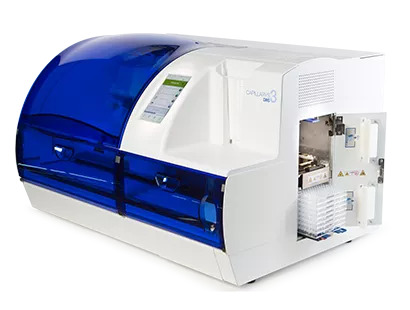
Next Generation Instrument Screens for Hemoglobin Disorders in Newborns
Hemoglobinopathies, the most widespread inherited conditions globally, affect about 7% of the population as carriers, with 2.7% of newborns being born with these conditions. The spectrum of clinical manifestations... Read more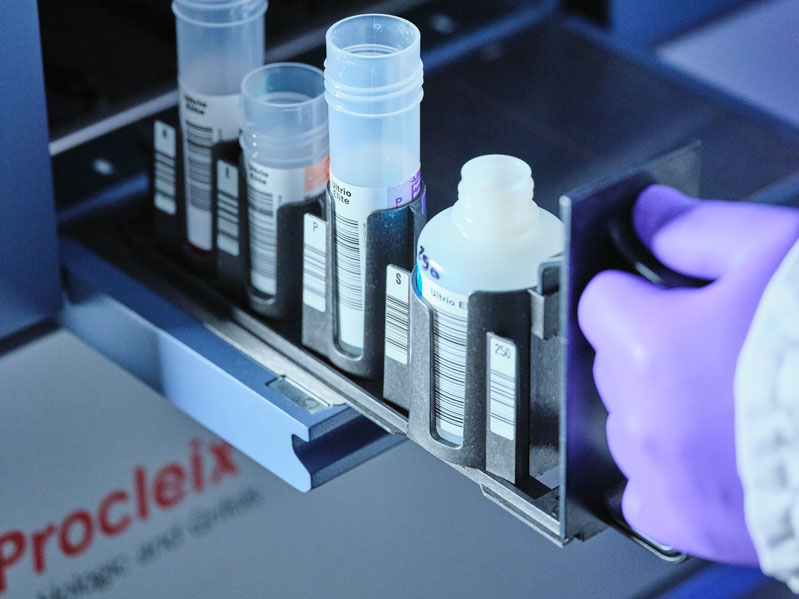
First 4-in-1 Nucleic Acid Test for Arbovirus Screening to Reduce Risk of Transfusion-Transmitted Infections
Arboviruses represent an emerging global health threat, exacerbated by climate change and increased international travel that is facilitating their spread across new regions. Chikungunya, dengue, West... Read more
POC Finger-Prick Blood Test Determines Risk of Neutropenic Sepsis in Patients Undergoing Chemotherapy
Neutropenia, a decrease in neutrophils (a type of white blood cell crucial for fighting infections), is a frequent side effect of certain cancer treatments. This condition elevates the risk of infections,... Read more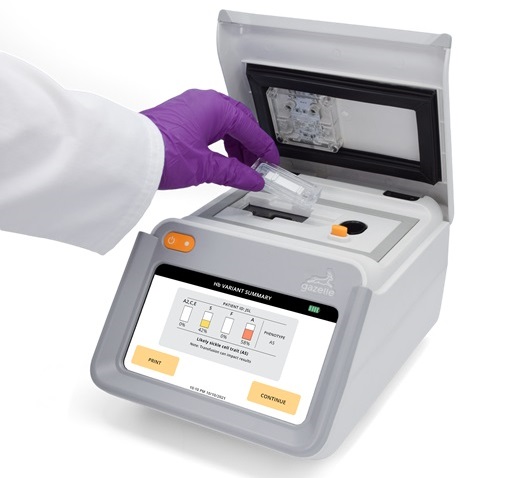
First Affordable and Rapid Test for Beta Thalassemia Demonstrates 99% Diagnostic Accuracy
Hemoglobin disorders rank as some of the most prevalent monogenic diseases globally. Among various hemoglobin disorders, beta thalassemia, a hereditary blood disorder, affects about 1.5% of the world's... Read moreImmunology
view channel.jpg)
AI Predicts Tumor-Killing Cells with High Accuracy
Cellular immunotherapy involves extracting immune cells from a patient's tumor, potentially enhancing their cancer-fighting capabilities through engineering, and then expanding and reintroducing them into the body.... Read more
Diagnostic Blood Test for Cellular Rejection after Organ Transplant Could Replace Surgical Biopsies
Transplanted organs constantly face the risk of being rejected by the recipient's immune system which differentiates self from non-self using T cells and B cells. T cells are commonly associated with acute... Read more
AI Tool Precisely Matches Cancer Drugs to Patients Using Information from Each Tumor Cell
Current strategies for matching cancer patients with specific treatments often depend on bulk sequencing of tumor DNA and RNA, which provides an average profile from all cells within a tumor sample.... Read more
Genetic Testing Combined With Personalized Drug Screening On Tumor Samples to Revolutionize Cancer Treatment
Cancer treatment typically adheres to a standard of care—established, statistically validated regimens that are effective for the majority of patients. However, the disease’s inherent variability means... Read moreMicrobiology
view channel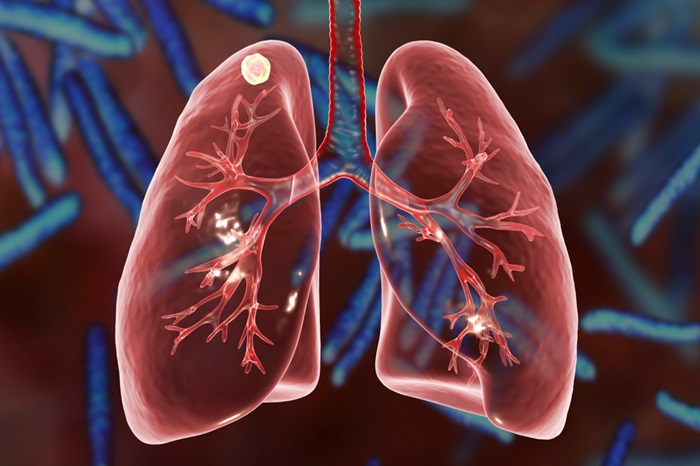
Integrated Solution Ushers New Era of Automated Tuberculosis Testing
Tuberculosis (TB) is responsible for 1.3 million deaths every year, positioning it as one of the top killers globally due to a single infectious agent. In 2022, around 10.6 million people were diagnosed... Read more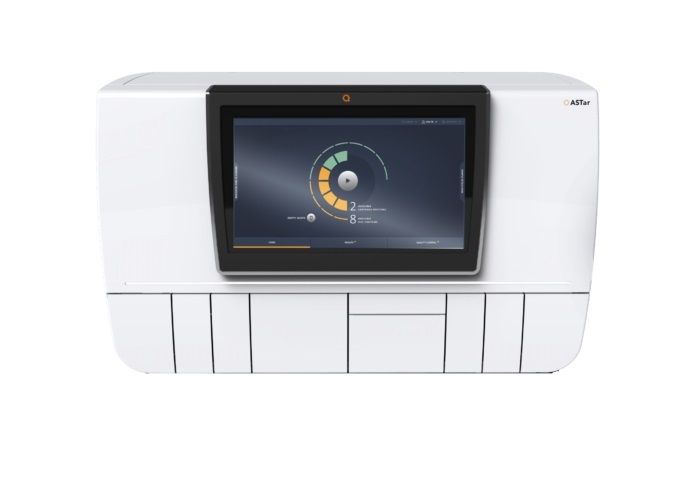
Automated Sepsis Test System Enables Rapid Diagnosis for Patients with Severe Bloodstream Infections
Sepsis affects up to 50 million people globally each year, with bacteraemia, formerly known as blood poisoning, being a major cause. In the United States alone, approximately two million individuals are... Read moreEnhanced Rapid Syndromic Molecular Diagnostic Solution Detects Broad Range of Infectious Diseases
GenMark Diagnostics (Carlsbad, CA, USA), a member of the Roche Group (Basel, Switzerland), has rebranded its ePlex® system as the cobas eplex system. This rebranding under the globally renowned cobas name... Read more
Clinical Decision Support Software a Game-Changer in Antimicrobial Resistance Battle
Antimicrobial resistance (AMR) is a serious global public health concern that claims millions of lives every year. It primarily results from the inappropriate and excessive use of antibiotics, which reduces... Read morePathology
view channel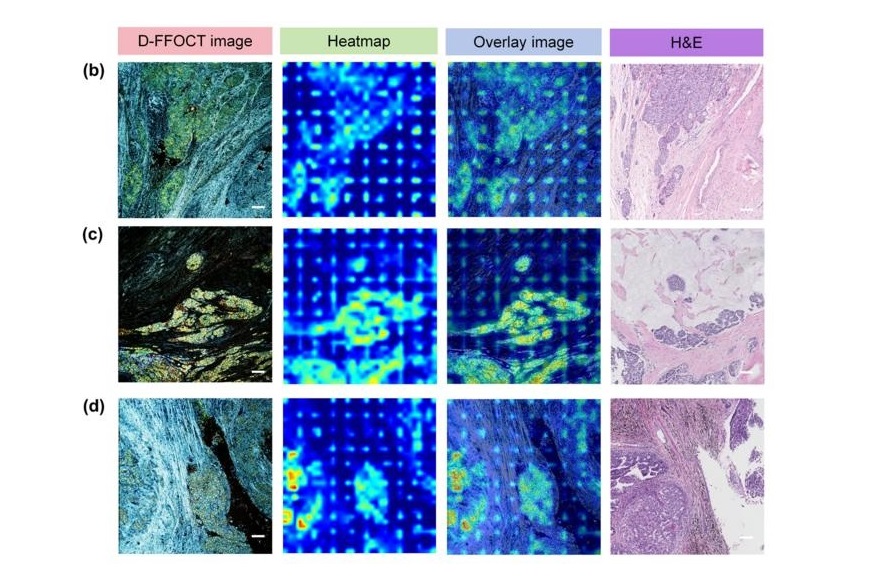
AI Integrated With Optical Imaging Technology Enables Rapid Intraoperative Diagnosis
Rapid and accurate intraoperative diagnosis is essential for tumor surgery as it guides surgical decisions with precision. Traditional intraoperative assessments, such as frozen sections based on H&E... Read more
HPV Self-Collection Solution Improves Access to Cervical Cancer Testing
Annually, over 604,000 women across the world are diagnosed with cervical cancer, and about 342,000 die from this disease, which is preventable and primarily caused by the Human Papillomavirus (HPV).... Read moreHyperspectral Dark-Field Microscopy Enables Rapid and Accurate Identification of Cancerous Tissues
Breast cancer remains a major cause of cancer-related mortality among women. Breast-conserving surgery (BCS), also known as lumpectomy, is the removal of the cancerous lump and a small margin of surrounding tissue.... Read moreTechnology
view channel
New Diagnostic System Achieves PCR Testing Accuracy
While PCR tests are the gold standard of accuracy for virology testing, they come with limitations such as complexity, the need for skilled lab operators, and longer result times. They also require complex... Read more
DNA Biosensor Enables Early Diagnosis of Cervical Cancer
Molybdenum disulfide (MoS2), recognized for its potential to form two-dimensional nanosheets like graphene, is a material that's increasingly catching the eye of the scientific community.... Read more
Self-Heating Microfluidic Devices Can Detect Diseases in Tiny Blood or Fluid Samples
Microfluidics, which are miniature devices that control the flow of liquids and facilitate chemical reactions, play a key role in disease detection from small samples of blood or other fluids.... Read more
Breakthrough in Diagnostic Technology Could Make On-The-Spot Testing Widely Accessible
Home testing gained significant importance during the COVID-19 pandemic, yet the availability of rapid tests is limited, and most of them can only drive one liquid across the strip, leading to continued... Read moreIndustry
view channel
Danaher and Johns Hopkins University Collaborate to Improve Neurological Diagnosis
Unlike severe traumatic brain injury (TBI), mild TBI often does not show clear correlations with abnormalities detected through head computed tomography (CT) scans. Consequently, there is a pressing need... Read more
Beckman Coulter and MeMed Expand Host Immune Response Diagnostics Partnership
Beckman Coulter Diagnostics (Brea, CA, USA) and MeMed BV (Haifa, Israel) have expanded their host immune response diagnostics partnership. Beckman Coulter is now an authorized distributor of the MeMed... Read more_1.jpg)







